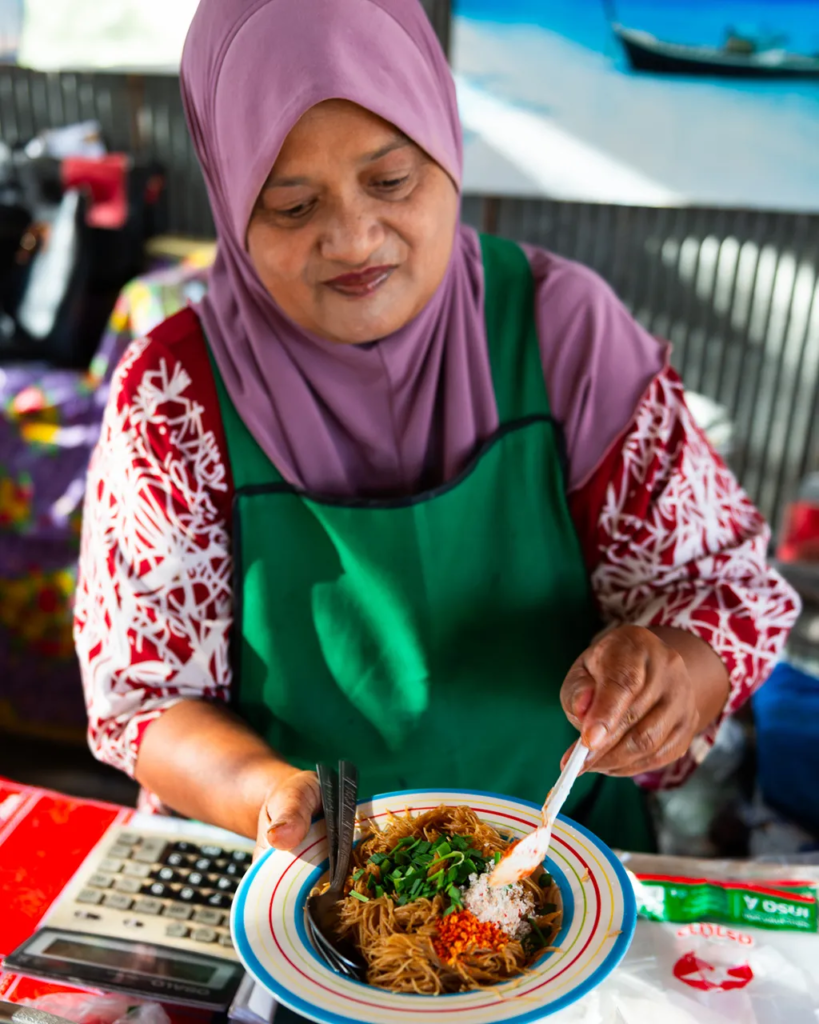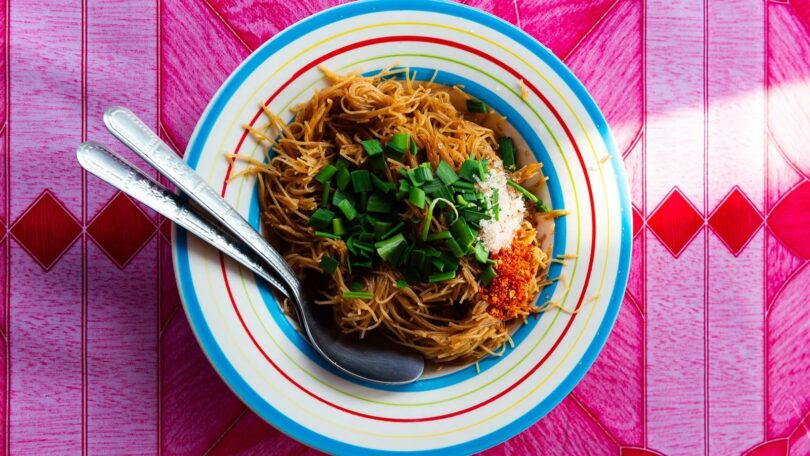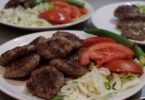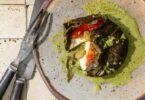Austin Bush
If you didn’t grow up on Ko Yao Noi, an island in Thailand’s Phang-Nga Province, finding breakfast can require a bit of luck.
On this and similarly small islands in southern Thailand, the first meal of the day is often sold from rural homes that double as simple restaurants – the kind of places non-locals would pass by without noticing.
Ma Ya’s place is the perfect example of this. Located in a nondescript house on the side of the road that encircles Ko Yao Noi, I’m alerted to it not by a sign but rather by the group of motorcycles parked out front. Under a veranda in what is essentially the front yard, a handful of men wearing Muslim garb sit at a table, chatting, drinking tiny glasses of sweet tea, and smoking hand-rolled cigarettes. In typical southern Thai style, the surface of the table is covered with trays loaded with traditional sweets wrapped in banana leaves, cakes and knots of deep-fried dough.
The cook and proprietor is Ma Ya. Her real name is Supranee Pradit, but nobody calls her this; everyone in Thailand has a nickname. Ma Ya stands behind the counter, which is loaded with vast stainless-steel bowls filled with khao mok kai, turmeric-tinged chicken biryani; khao yam, rice tossed with shrimp paste, toasted coconut and herbs; and khanom jiin, a type of curry meant to be served over noodles.
I have stopped here in search of mii kathi. A staple at Muslim-run southern Thai breakfast shacks, the dish takes the form of thin, round rice noodles wok-fried in ingredients that include tamarind, coconut milk, soy sauce and dried chillies. Mii kathi shares elements with laksa, a noodle soup of Indo-Malay origin, but is closer to mee siam, a fried noodle dish of possible Thai origin that’s popular across the border in predominantly Muslim Malaysia – particularly in the country’s north.
I spot mii kathi in one of those stainless-steel bowls and order it. Ma Ya presents a plate piled with noodles in an orange-red hue, garnished with Chinese chives and dashes of dried chilli powder and sugar. The dish has a near-perfect balance of tart and sweet flavours, followed by a pleasant richness, a slight saltiness and a distant spiciness. The garnish of Chinese chives adds a subtle crunch and bitterness. For a breakfast dish, there’s a lot going on.
“My mom used to sell food here when I was a student,” said Ma Ya when I ask about the origins of the dish, which is made with a blend of Chinese and Southeast Asian seasonings and ingredients. “I learned the recipes from her.” Ma Ya explained that mii kathi can be eaten on its own, or used to garnish khaao yam, southern Thailand’s famous rice salad. The dish also functions as an anytime snack or light meal eaten throughout the day.
At her shack, Ma Ya makes the coconut milk for the dish by hand, shredding coconuts from her garden and squeezing the meat through a sieve to extract the rich milk. “On Ko Yao Noi, there’s a lot of things we don’t have to buy,” she said. “We have them at home.”

Mii Kathi recipe
By Supranee Pradit (Ma Ya)
Unless you have a particularly large wok or frying pan, it’s best to fry the noodles in two steps.
Serves 4
Method
Step 1
Soak the rice noodles in room temperature water for 15 minutes. Strain and discard the water. Set aside.
Step 2
Meanwhile, put the chillies in a saucepan and add enough water to cover them. Bring to a boil over high heat. Remove the saucepan from the heat and soak the chillies for 15 minutes. Drain, discarding the water, and when cool enough to handle, remove and discard the seeds and stringy membranes from the chillies. Slice the chillies.
Step 3
Using a mortar and pestle (or a food processor), pound and grind (or process) the chillies, shallots and garlic to a coarse paste.
Step 4
In a large wok or frying pan over medium-low heat, add the vegetable oil and the chilli paste. Fry, stirring frequently, until fragrant, around 2 minutes. Add the coconut milk, tamarind pulp, water, sugar, soy sauce and salt. Increase the heat to medium and simmer until bubbling and amalgamated, around 2 or 3 minutes. Remove half of the sauce and set aside.
Step 5
Add half the noodles to the wok, increase the heat to medium-high and fry, stirring constantly, until the noodles have absorbed all the liquid and are dry in consistency (around 5 minutes). Taste, adjusting seasonings if necessary; the noodles should taste equal parts sweet and tart, with balanced background flavours of salty, rich and spicy. Remove, set aside, and repeat with the remaining noodles and sauce.
Step 6
Transfer the noodles to four plates, garnish each with the Chinese chives and a pinch each of chilli powder and sugar, if desired. Serve warm or at room temperature.
Note
Sweet or dark soy sauce lends the dish a pleasantly bitter, molasses-like flavour that you won’t find in your more common light soy sauce.
Courtesy: BBC







